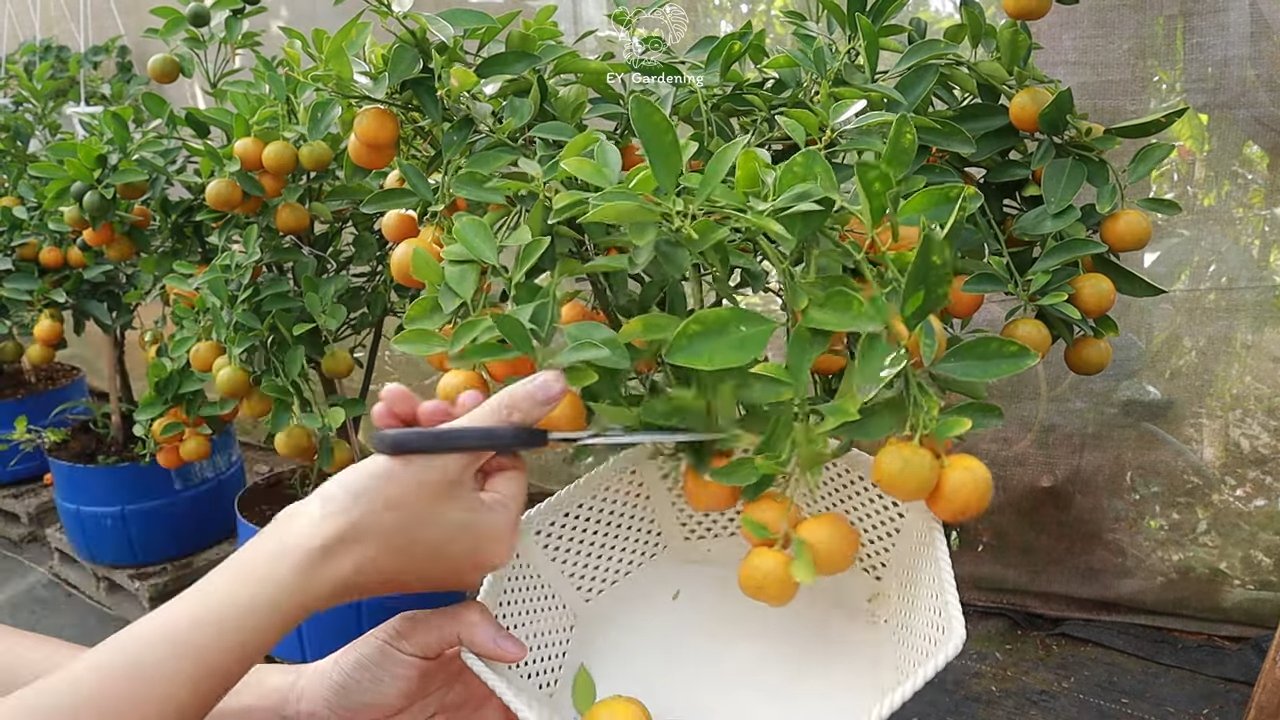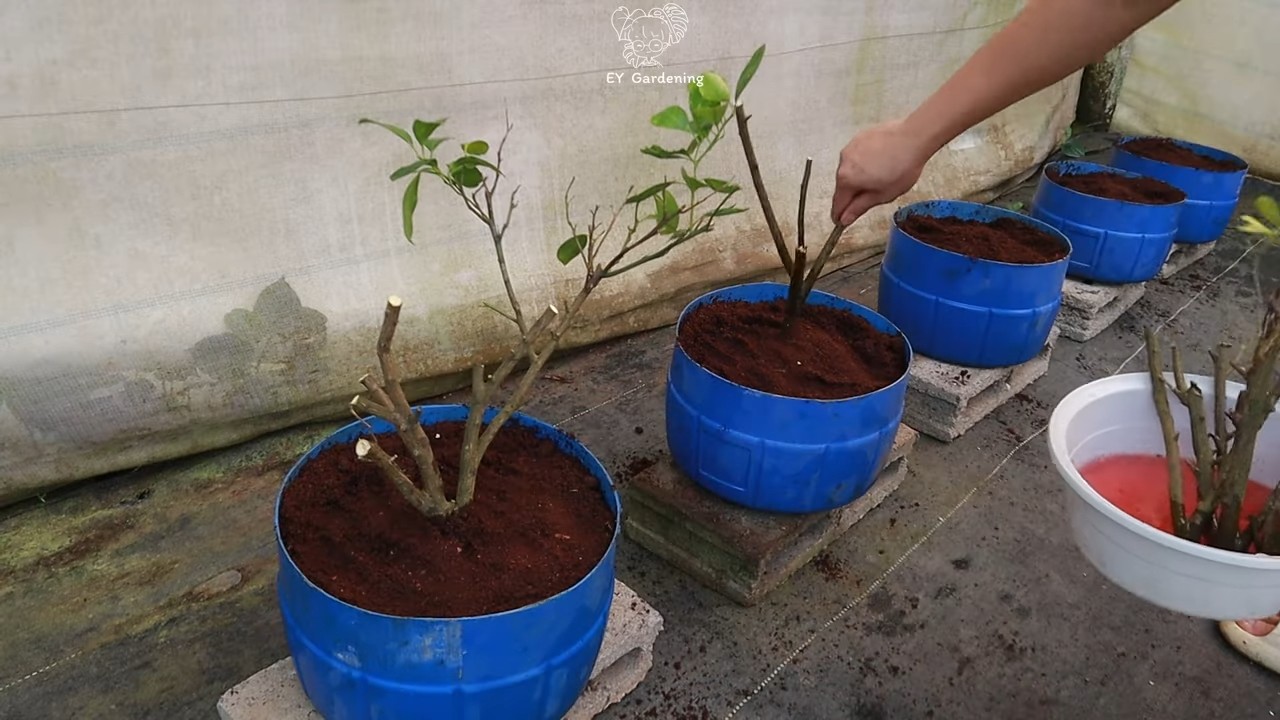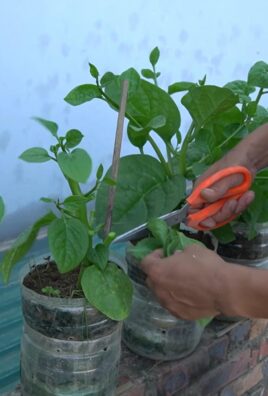Kumquat Propagation from Cuttings: Ever dreamed of having a miniature citrus orchard bursting with those tangy-sweet, bite-sized delights? I know I have! Forget shelling out big bucks at the nursery; I’m going to show you how to multiply your kumquat bounty right in your own backyard, using a simple and satisfying DIY method: propagation from cuttings.
Kumquats, with their edible peels and vibrant orange hue, have a rich history, particularly in East Asia, where they symbolize good luck and prosperity. For centuries, they’ve been cultivated not just for their delicious fruit, but also for their ornamental value. Now, you can easily bring that same good fortune and beauty to your home garden!
Why bother with kumquat propagation from cuttings? Well, for starters, it’s incredibly rewarding to nurture a new plant from a simple cutting. Plus, it’s a fantastic way to preserve your favorite kumquat variety or share the joy of these little citrus gems with friends and family. Let’s be honest, buying multiple kumquat trees can get expensive. This DIY trick allows you to expand your collection without breaking the bank. So, grab your gardening gloves, and let’s dive into the wonderful world of kumquat propagation!

Propagating Kumquats from Cuttings: A DIY Guide
Hey there, fellow gardening enthusiasts! Ever tasted a kumquat straight from the tree? The sweet rind and tart pulp are a flavor explosion! And guess what? You can grow your own kumquat tree from a simple cutting. It’s easier than you think, and I’m here to guide you through the whole process. Let’s get started!
What You’ll Need
Before we dive in, let’s gather our supplies. Having everything ready will make the process smooth and enjoyable.
* Sharp, Clean Pruning Shears or Knife: This is crucial for taking healthy cuttings and preventing disease. Make sure they’re sterilized with rubbing alcohol or a bleach solution (1 part bleach to 9 parts water).
* Rooting Hormone: This powder or gel encourages root development. While not strictly necessary, it significantly increases your chances of success. I highly recommend it!
* Well-Draining Potting Mix: A mix specifically designed for cuttings or seedlings is ideal. It needs to retain moisture but also drain well to prevent root rot. A mix of perlite, vermiculite, and peat moss works wonders.
* Small Pots or Containers: Choose pots that are about 3-4 inches in diameter. They should have drainage holes at the bottom.
* Clear Plastic Bag or Humidity Dome: This will create a humid environment, which is essential for successful rooting.
* Spray Bottle with Water: For misting the cuttings to keep them hydrated.
* Labels and a Permanent Marker: To keep track of your cuttings and their progress. Trust me, you’ll want to label them!
* A Healthy Kumquat Tree: Of course! You’ll need a mature kumquat tree to take your cuttings from.
Selecting and Taking Cuttings
This is where the magic begins! Choosing the right cuttings is key to success.
* Timing is Important: The best time to take kumquat cuttings is in late spring or early summer, when the tree is actively growing.
* Choose Healthy Shoots: Look for new growth that is about 4-6 inches long. The stems should be green and flexible, but not too soft. Avoid stems that are woody or have flowers or fruit.
* Make the Cut: Using your sterilized pruning shears or knife, make a clean cut just below a node (the point where a leaf or branch grows from the stem). The cut should be at a 45-degree angle.
* Take Multiple Cuttings: It’s always a good idea to take several cuttings to increase your chances of success. I usually take at least 5-6.
* Prepare the Cuttings Immediately: Don’t let the cuttings dry out. Move on to the next step as quickly as possible.
Preparing the Cuttings for Rooting
Now that we have our cuttings, let’s get them ready to root!
1. Remove Lower Leaves: Carefully remove the leaves from the bottom 1-2 inches of the cutting. This will prevent them from rotting and competing with root development.
2. Reduce Leaf Size (Optional): If the remaining leaves are large, you can cut them in half horizontally. This reduces water loss through transpiration.
3. Apply Rooting Hormone: Moisten the cut end of the stem with water, then dip it into the rooting hormone powder or gel. Tap off any excess. This step is crucial for encouraging root growth.
4. Prepare the Potting Mix: Moisten the potting mix with water until it’s damp but not soggy. Fill the small pots with the prepared mix.
5. Plant the Cuttings: Use a pencil or your finger to make a hole in the potting mix. Gently insert the cutting into the hole, making sure the bottom 1-2 inches of the stem are buried.
6. Firm the Soil: Gently firm the soil around the cutting to provide support.
7. Water Lightly: Water the cuttings lightly to settle the soil.
8. Create a Humid Environment: Place the pots inside a clear plastic bag or under a humidity dome. This will help to keep the cuttings moist and prevent them from drying out.
9. Label Your Cuttings: Use a permanent marker to label each pot with the date and type of cutting. This will help you keep track of their progress.
Caring for Your Cuttings
Patience is key! Rooting can take several weeks, so don’t get discouraged if you don’t see results immediately.
1. Provide Indirect Light: Place the cuttings in a warm location with bright, indirect light. Avoid direct sunlight, which can scorch the leaves.
2. Maintain Humidity: Keep the plastic bag or humidity dome in place to maintain high humidity. Open it briefly every few days to allow for air circulation and prevent mold growth.
3. Water Regularly: Check the potting mix regularly and water when the top inch feels dry. Be careful not to overwater, as this can lead to root rot.
4. Mist the Cuttings: Mist the cuttings with water every day or two to keep them hydrated.
5. Check for Root Development: After a few weeks, gently tug on the cuttings to see if they have rooted. If you feel resistance, it means roots have formed. You can also gently remove a cutting from the pot to check for roots.
6. Gradually Acclimate to Lower Humidity: Once the cuttings have rooted, gradually acclimate them to lower humidity by opening the plastic bag or humidity dome for longer periods each day.
7. Transplant to Larger Pots: Once the cuttings have developed a strong root system, you can transplant them to larger pots with well-draining potting mix.
Transplanting and Growing Your New Kumquat Tree
Congratulations! You’ve successfully rooted your kumquat cuttings. Now it’s time to give them a permanent home.
1. Choose the Right Pot: Select a pot that is at least 6-8 inches in diameter. Make sure it has drainage holes at the bottom.
2. Prepare the Potting Mix: Use a well-draining potting mix specifically formulated for citrus trees.
3. Gently Remove the Seedling: Carefully remove the rooted cutting from its small pot. Be gentle to avoid damaging the roots.
4. Plant the Seedling: Place the seedling in the center of the new pot and fill in around it with potting mix.
5. Water Thoroughly: Water the seedling thoroughly to settle the soil.
6. Provide Sunlight: Place the pot in a location that receives at least 6-8 hours of sunlight per day.
7. Fertilize Regularly: Fertilize your kumquat tree regularly with a citrus fertilizer, following the instructions on the label.
8. Water Properly: Water your kumquat tree when the top inch of soil feels dry. Avoid overwatering, as this can lead to root rot.
9. Prune as Needed: Prune your kumquat tree to maintain its shape and encourage fruit production.
10. Protect from Frost: Kumquat trees are sensitive to frost. If you live in an area with cold winters, you’ll need to protect your tree from freezing temperatures. You can bring it indoors or cover it with a frost blanket.
Troubleshooting
Even with the best care, you might encounter some challenges. Here are a few common problems and how to address them:
* Cuttings Not Rooting: This could be due to several factors, including poor cutting selection, lack of humidity, or improper watering. Make sure you’re using healthy cuttings, providing adequate humidity, and watering properly. You can also try using a stronger rooting hormone.
* Root Rot: This is caused by overwatering. Make sure your potting mix is well-draining and avoid watering too frequently. If you suspect root rot, repot the cutting in fresh potting mix and remove any affected roots.
* Yellowing Leaves: This could be a sign of nutrient deficiency. Fertilize your kumquat tree with a citrus fertilizer.
* Pests: Kumquat trees can be susceptible to pests such as aphids, scale, and spider mites. Inspect your tree regularly and treat any infestations promptly with an appropriate insecticide.
Enjoy Your Homegrown Kumquats!
Growing kumquats from cuttings is a rewarding experience. With a little patience and care, you can enjoy the delicious flavor of homegrown kumquats for years to come. I hope this guide has been helpful. Happy gardening!

Conclusion
So, there you have it! Propagating kumquats from cuttings might seem a little daunting at first, but with a little patience and the right approach, you can successfully cultivate your own miniature citrus orchard. The benefits of this DIY trick are numerous: you’re essentially cloning a tree with desirable traits, saving money compared to buying mature plants, and experiencing the immense satisfaction of nurturing new life from a simple cutting.
This method is a must-try for any citrus enthusiast, especially if you already have a thriving kumquat tree you adore. Imagine gifting friends and family with their own little kumquat starters, all propagated from your prized specimen! Beyond the sheer joy of propagation, you’re also contributing to a more sustainable gardening practice by reducing reliance on commercially grown plants.
Don’t be afraid to experiment with variations! While we’ve focused on semi-hardwood cuttings, you might find success with softwood cuttings taken earlier in the growing season. You can also try different rooting hormones or even explore air layering as an alternative propagation method. Consider the specific microclimate in your area and adjust your care accordingly. For example, if you live in a particularly dry climate, you might need to mist your cuttings more frequently.
Remember, success in propagation often comes down to consistent care and attention. Keep your cuttings consistently moist, provide them with adequate light, and protect them from extreme temperatures. Observe them closely for any signs of disease or pests, and address any issues promptly.
We wholeheartedly encourage you to give this **kumquat propagation** method a try. It’s a rewarding experience that will deepen your connection to the natural world and provide you with an abundance of delicious, homegrown fruit for years to come. Don’t forget to document your journey and share your successes (and even your failures!) with us in the comments below. We’re eager to hear about your experiences and learn from your insights. Happy propagating!
Frequently Asked Questions (FAQs)
Q: What is the best time of year to take kumquat cuttings?
A: The ideal time to take kumquat cuttings is typically in late spring or early summer, after the new growth has started to harden off slightly. This is when the semi-hardwood cuttings are most likely to root successfully. Avoid taking cuttings during the dormant winter months.
Q: What type of cutting should I take: softwood, semi-hardwood, or hardwood?
A: For kumquat propagation, semi-hardwood cuttings generally offer the best success rate. These are cuttings taken from the current season’s growth that has begun to mature and harden, but is not yet fully woody. Softwood cuttings, taken from very new growth, can be more prone to rotting, while hardwood cuttings, taken from mature wood, can be slower to root.
Q: Do I really need to use rooting hormone?
A: While not strictly essential, rooting hormone significantly increases the chances of successful rooting and speeds up the process. It contains auxins, which are plant hormones that stimulate root development. We highly recommend using a rooting hormone powder or gel for best results.
Q: What kind of potting mix should I use for my kumquat cuttings?
A: A well-draining potting mix is crucial to prevent root rot. A mix of perlite and peat moss or coco coir is a good option. You can also use a commercially available seed starting mix. Avoid using garden soil, as it can be too heavy and may contain pathogens.
Q: How often should I water my kumquat cuttings?
A: Keep the potting mix consistently moist, but not waterlogged. Water when the top inch of soil feels dry to the touch. Overwatering can lead to root rot, while underwatering can cause the cuttings to dry out and die. Misting the cuttings regularly can also help maintain humidity.
Q: How much light do my kumquat cuttings need?
A: Provide your cuttings with bright, indirect light. Avoid direct sunlight, which can scorch the leaves. A location near an east-facing window is often ideal. You can also use a grow light if natural light is limited.
Q: How long does it take for kumquat cuttings to root?
A: Rooting time can vary depending on environmental conditions and the health of the cuttings, but it typically takes 4-8 weeks for roots to develop. You can gently check for root development by tugging lightly on the cutting. If you feel resistance, it indicates that roots have formed.
Q: How do I know if my kumquat cuttings have rooted successfully?
A: The most obvious sign of successful rooting is the appearance of new growth. You may see new leaves emerging from the cutting. You can also gently tug on the cutting to check for resistance, as mentioned above.
Q: When can I transplant my rooted kumquat cuttings into larger pots?
A: Once the cuttings have developed a healthy root system, typically after 2-3 months, you can transplant them into larger pots. Choose pots that are slightly larger than the current containers and use a well-draining potting mix formulated for citrus trees.
Q: What kind of care do my newly transplanted kumquat trees need?
A: Provide your newly transplanted kumquat trees with regular watering, fertilization, and protection from extreme temperatures. Use a citrus-specific fertilizer according to the package directions. Monitor for pests and diseases and address any issues promptly.
Q: Can I grow kumquats from cuttings indoors?
A: Yes, kumquats can be grown indoors, especially in colder climates. However, they will need plenty of bright light, either from a sunny window or a grow light. You may also need to hand-pollinate the flowers to ensure fruit production.
Q: What are some common problems I might encounter when propagating kumquats from cuttings?
A: Common problems include root rot, fungal diseases, and pest infestations. Root rot can be prevented by using a well-draining potting mix and avoiding overwatering. Fungal diseases can be treated with a fungicide. Pests can be controlled with insecticidal soap or other appropriate treatments.
Q: My kumquat cuttings are wilting. What should I do?
A: Wilting can be caused by several factors, including underwatering, overwatering, and excessive heat. Check the moisture level of the potting mix and adjust your watering accordingly. Ensure that the cuttings are not exposed to direct sunlight or extreme temperatures. You can also try misting the cuttings more frequently to increase humidity.
Q: My kumquat cuttings are turning yellow. What should I do?
A: Yellowing leaves can indicate a nutrient deficiency or a pest infestation. Fertilize your cuttings with a citrus-specific fertilizer and inspect them for pests. If you find pests, treat them with insecticidal soap or other appropriate treatments.
Q: Can I propagate other citrus varieties from cuttings using the same method?
A: Yes, this method can be used to propagate other citrus varieties, although the success rate may vary depending on the specific variety. Some citrus varieties are easier to propagate from cuttings than others. Experimentation is key!





Leave a Comment